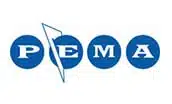Mass Flow Screw Feeders
KWS Mass Flow Screw Feeders are the most efficient method to unload bulk materials from a large bin, silo or hopper. The term "mass flow" describes a material flow pattern in which all material in a bin is drawn down at the same rate, regardless if the material is against the sidewall or in the center. (See Image 1)
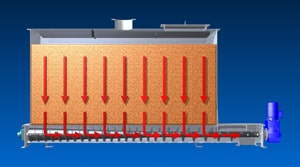
(Image 1. Mass Flow)
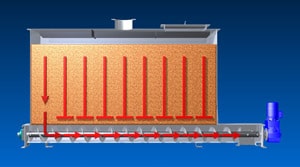
(Image 2. Funnel Flow)
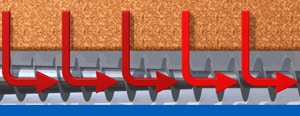
(Image 3. Close Up of Mass Flow Screw)
The alternative is commonly referred to as "funnel flow". In a funnel flow situation only the material in one portion of the bin is drawn down.
(See Image 2)
Funnel flow can leave large amounts of stagnant material in the bin and could lead to ruined product and possible safety hazards if the funnel collapses.
While mechanically simple in principle, the behavior of bulk materials during the draw down process can be complex. In order to create mass flow, both the bin and screw feeder must be designed properly.
In order to properly design for mass flow, material must be drawn down evenly along the entire length of the inlet opening of the screw feeder. Each pitch of the screw must have a higher volumetric rate than the preceding pitch. (See Image 3)
KWS Mass Flow Screw Feeders use a combination of varying inside diameter and pitch in order to ensure a consistent flow along the entire length of the inlet.
Download the Cone Screw Design WorksheetFeatures
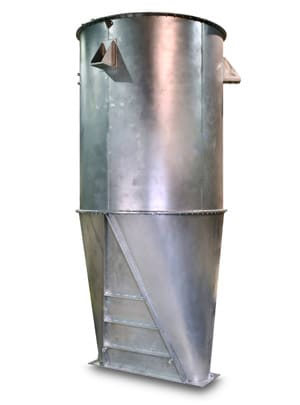
Typical Mass Flow Hopper
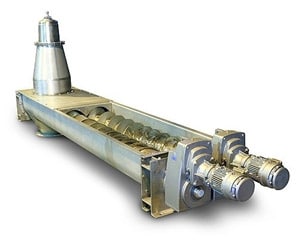
Mass Flow Twin Screw Feeder*
Mass Flow Screw Design – KWS Mass Flow Screw Feeders utilize a cone on the center pipe of the screw to create a tapered inside diameter (ID). The tapered ID provides a higher volumetric rate than the preceding pitch and accurately meters the flow of the bulk material from the bin above. Other types of feeders reduce the effective throat area of the inlet increasing the risk of bridging and funnel flow.
High Torque – KWS Mass Flow Screw Feeders typically operate below 20-rpm and generate very high drive torque when compared to other types of feeders and conveyors. High drive torque ensures that KWS Mass Flow Screw Feeders start up under the lead load of material in the bin above and operate continuously.
Wide Variety of Construction Materials – KWS Mass Flow Screw Feeders can be designed and manufactured in a variety of materials to suit the application. Common materials of construction include A-36 and A-516-70 carbon steels, 304 and 316 stainless steel and exotic materials like duplex stainless steel and Inconel.
Benefits
Continuous Operation – Mass flow eliminates downtime, maintenance and interruption of process flow. Funnel flow can cause bulk materials to bridge or flow irregularly affecting your process and production. Stagnant or ruined bulk materials are eliminated with mass flow.
Mass Flow Bins – Hopper, silo or bin design is equally important for creating mass flow. Inlet geometry and size as well as the slope of the bin walls are important design considerations. KWS works very closely with the leading bulk material flow consultants in the industry to design complete systems for mass flow of bulk materials.
Dust Tight Design – KWS Mass Flow Screw Feeders are fully contained and dust tight. Corrosive or hazardous bulk materials can be safely stored and metered. Housekeeping and maintenance costs are reduced. Potential explosion or exposure hazards are also eliminated.
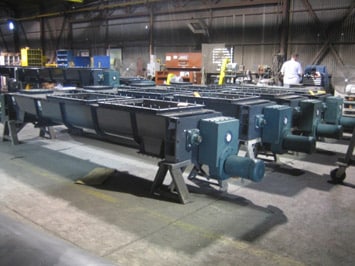
Ready for Testing*
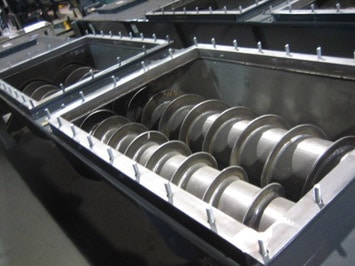
Close-up of Mass Flow Screws*
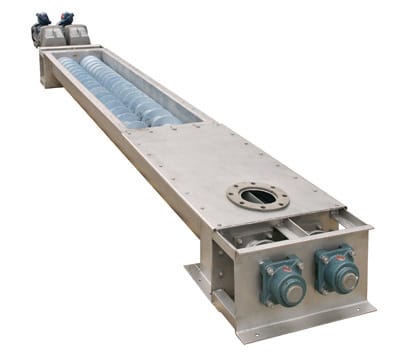
Mass Flow Twin Screw Feeder*
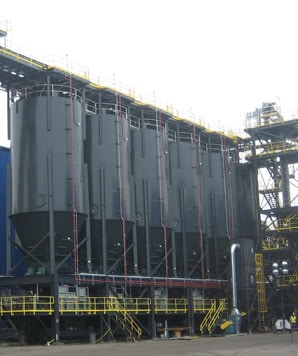
Mass Flow Hoppers
*Covers are removed for demonstration purposes only. Equipment must be operated at all times with covers securely bolted or fastened in place to provide fixed guarding.


